The goal of this report is to describe the instructions to build the telepresence platform.
Working principle
The working principle is: as the caller moves, it obscures (or lightens) an area of the screen which is being sensed by the LDR. As the LDRs detect a change in brightness on the screen, they change in resistance. As the resistance changes, a voltage divider transforms the change onto a voltage change which is then read by the ADC on the Arduino.
The Arduino then compares the change in voltage with the calibration values upon startup and if there is a change bigger than a 0.2V offset, instructs the stepper motor to move in the direction in which the caller moved.
Circuit diagram
The setup is included below and was made using Circuit Diagram Editor.

The power source was made using two 18650 batteries, though any other solution will do.
Platform build
The platform was build on Legos and Duplo, but any other solutions can be made that would also work.
The platform is divided into the following functional components:
Rotating platform
This is holding the phone in place, the sensors and rotating as the motor is activated.
An interesting finding is that the shaft from the stepper motor fits snugly into the hole of a Lego. The fit is so good that once the platform reaches the edge, the shaft slips safely, preventing the whole contraption from falling apart.
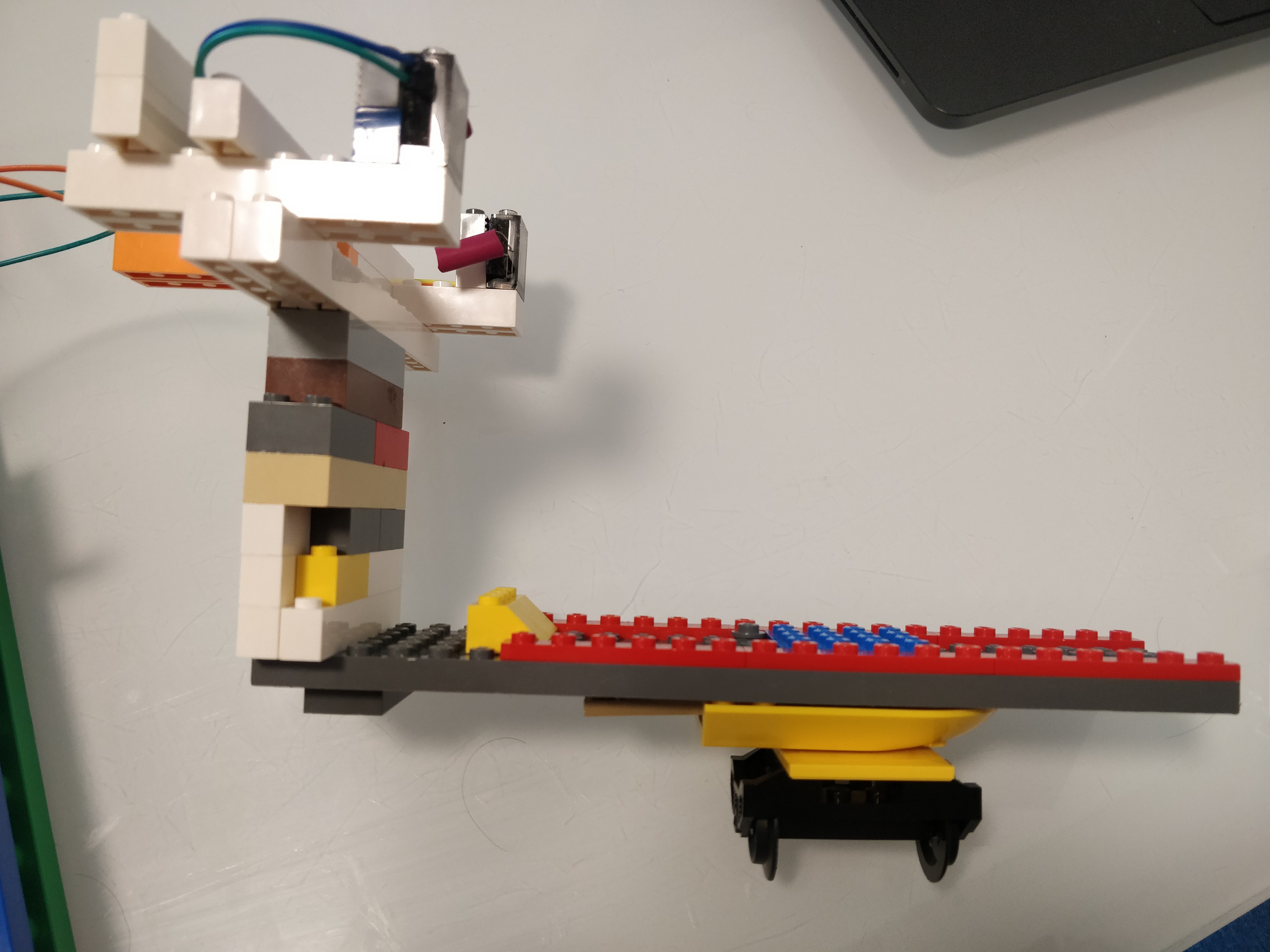 |  |
 | 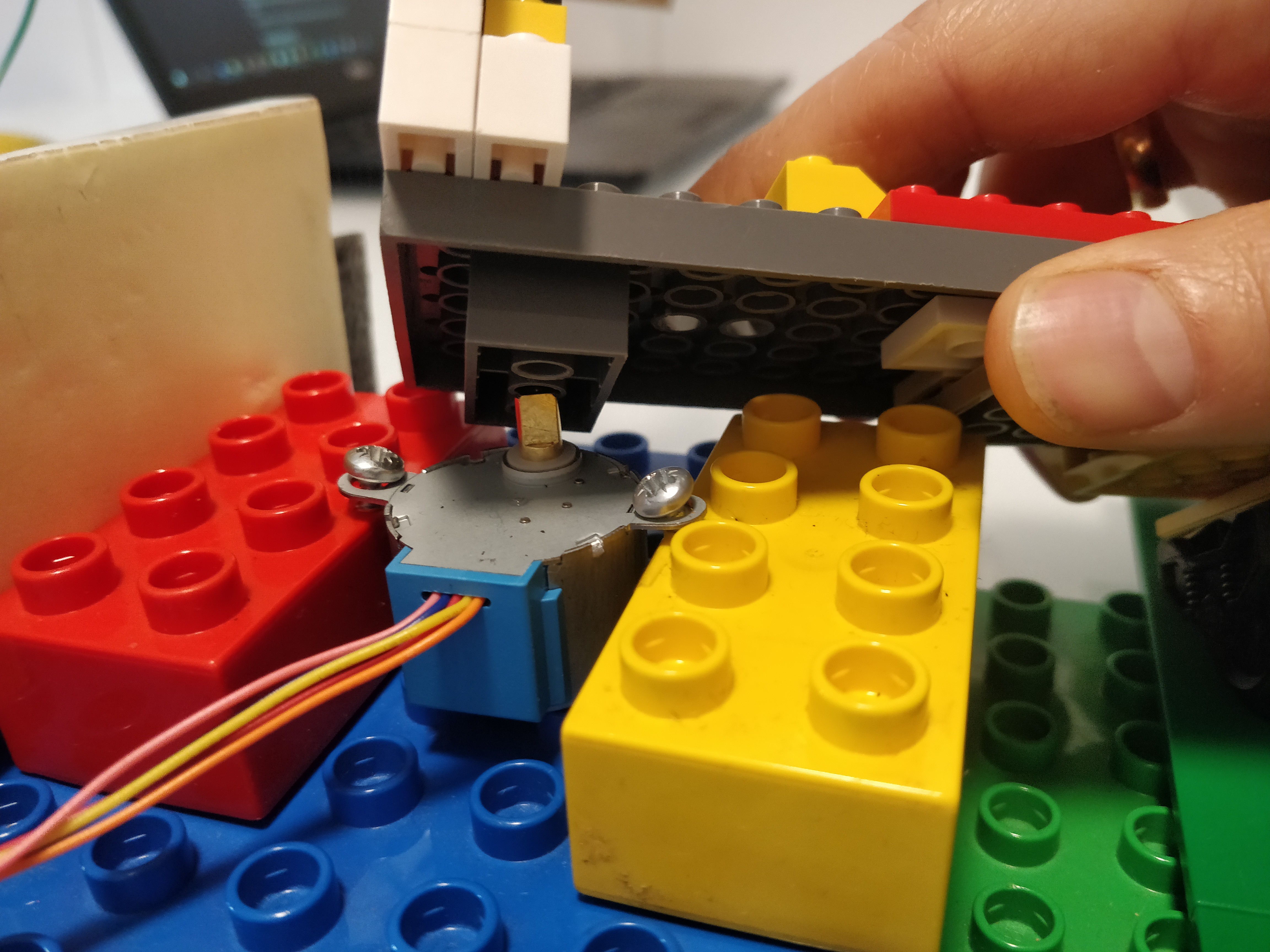 |
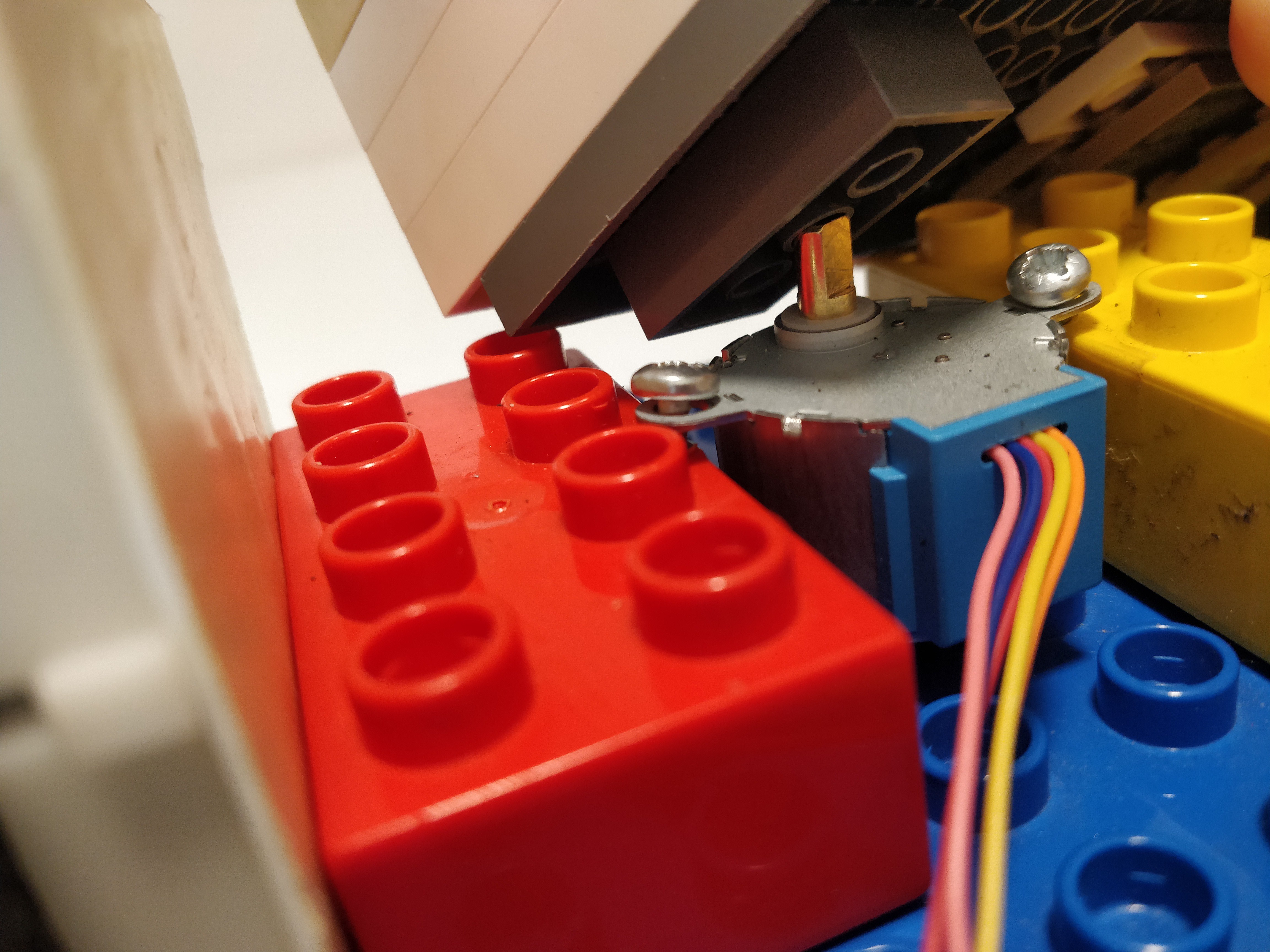 | 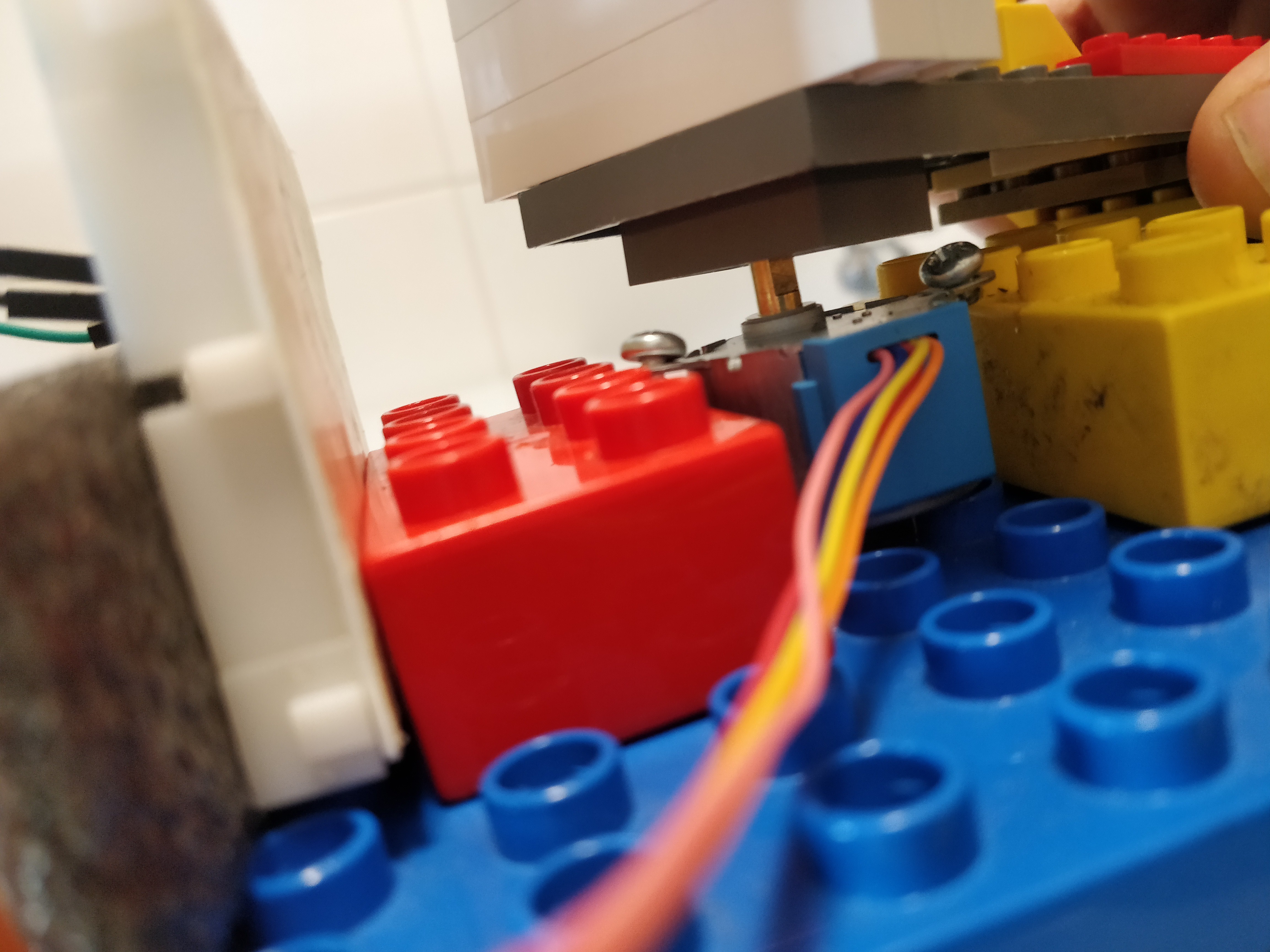 |
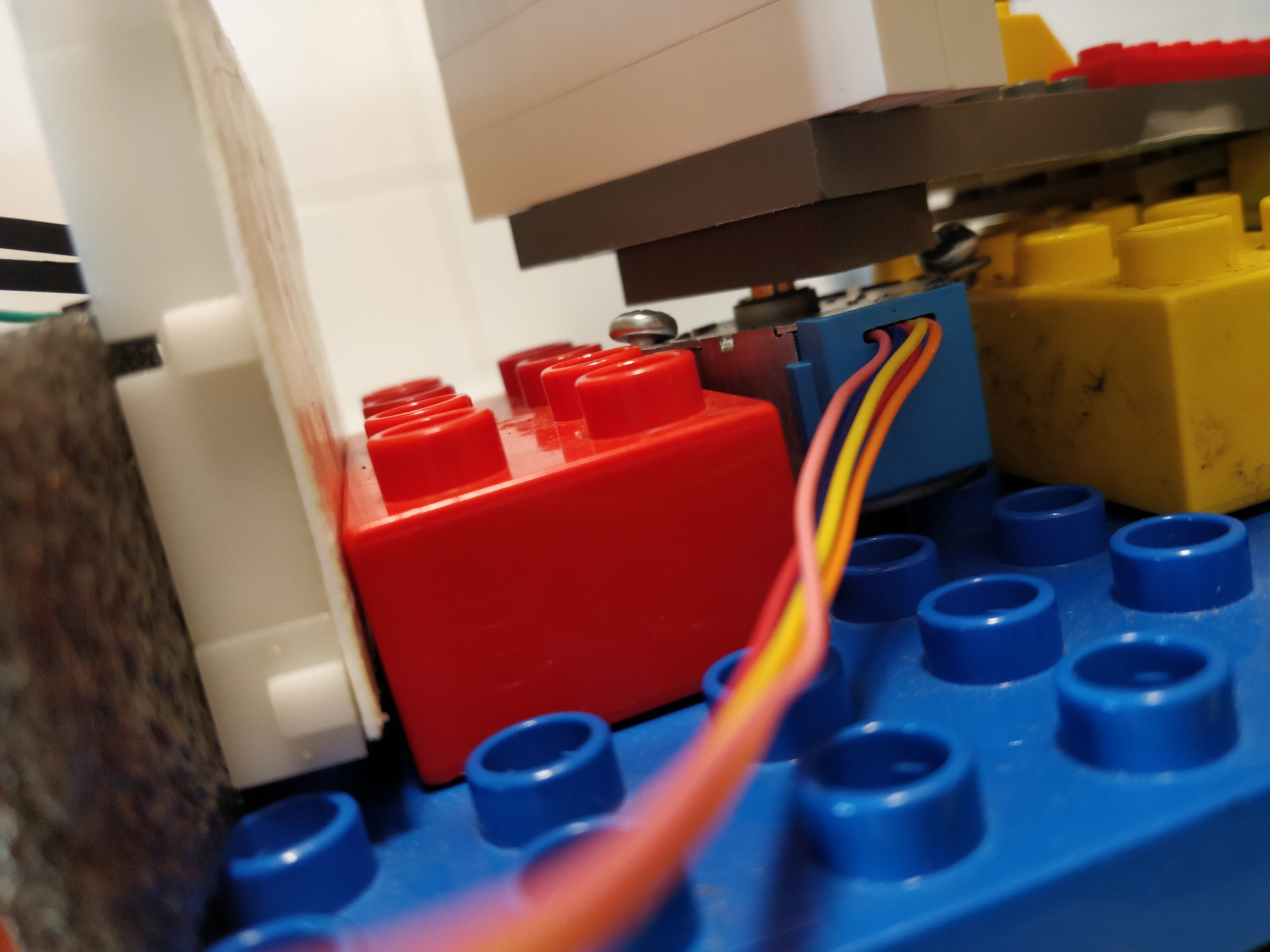 |
Phone support
This is the support proper made out of a brick wall of Lego on which the phone is supported. On the same wall, the sensors are mounted and positioned as below.
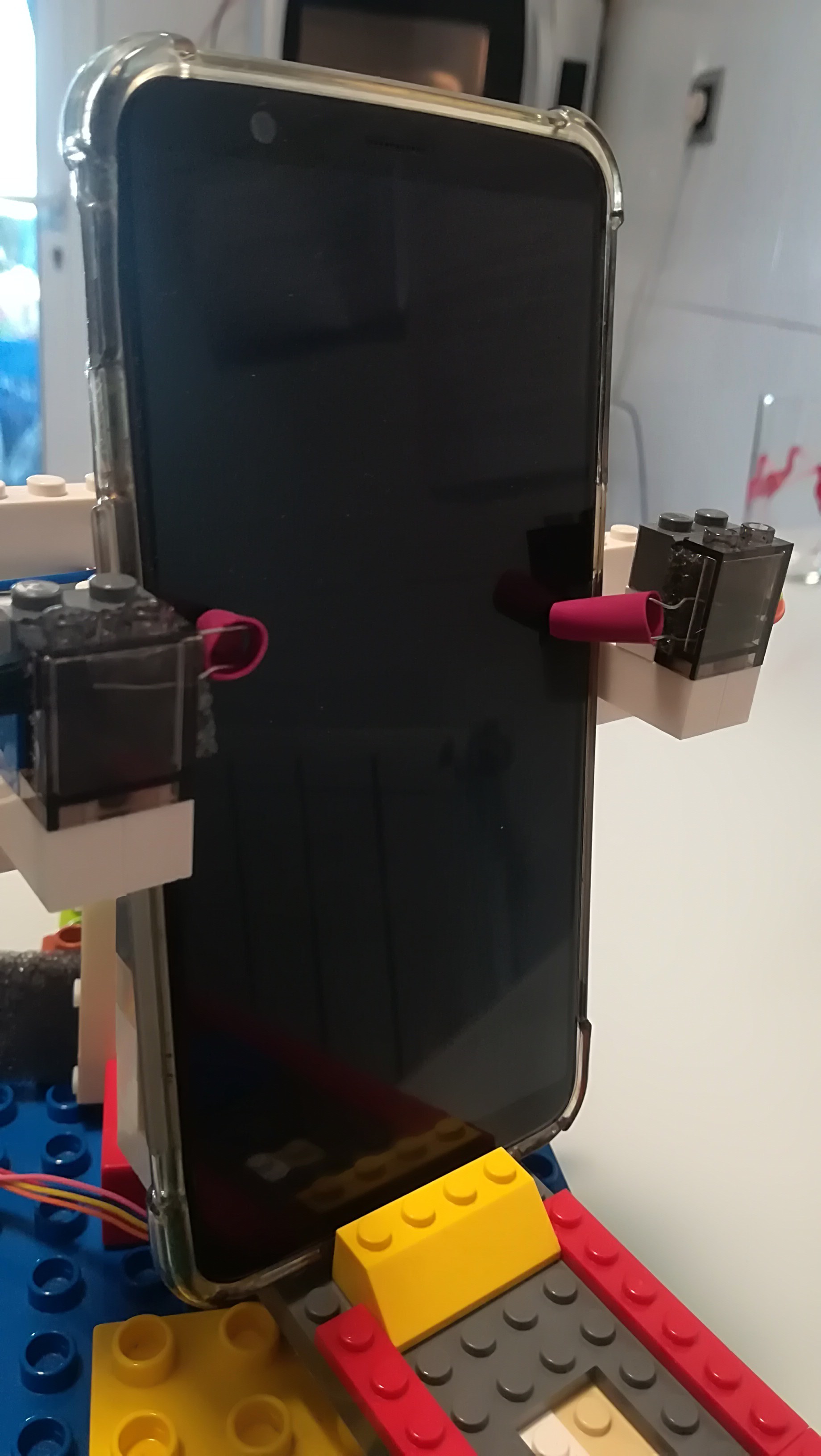
Putting it together
The rest is really some parts to hold everything in place. This is by no means a finished product, but it goes to show that telepresence can be implemented very easily using low cost components widely available and a simple Arduino sketch with no connection to the internet.
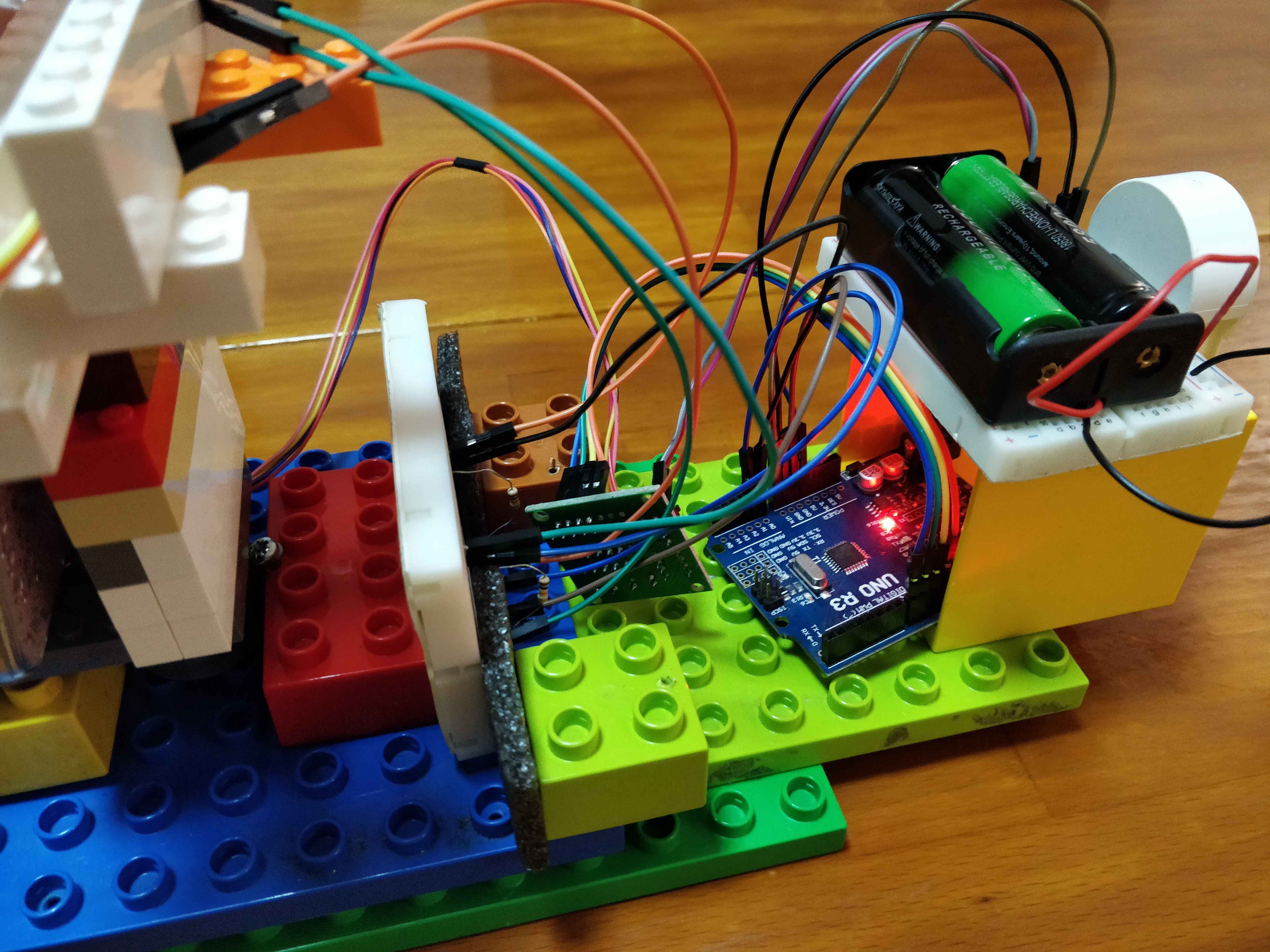

Discussions
Become a Hackaday.io Member
Create an account to leave a comment. Already have an account? Log In.